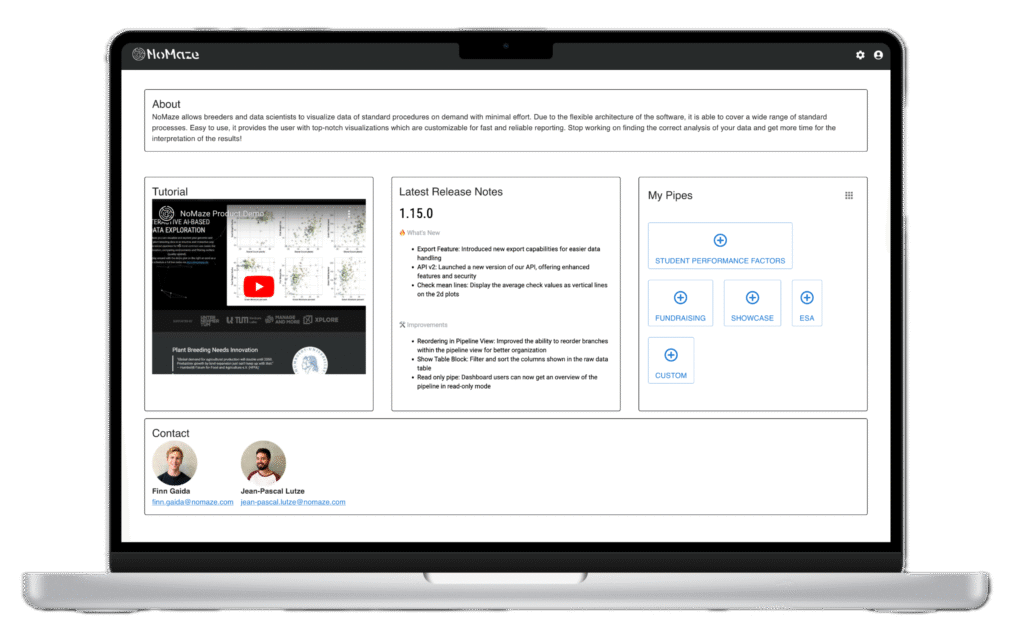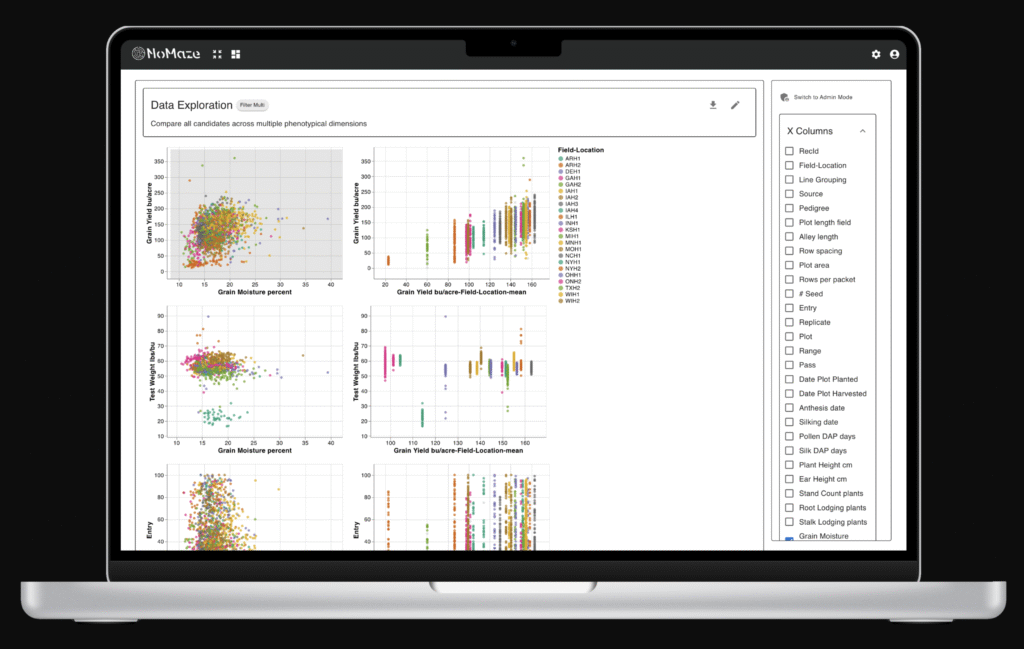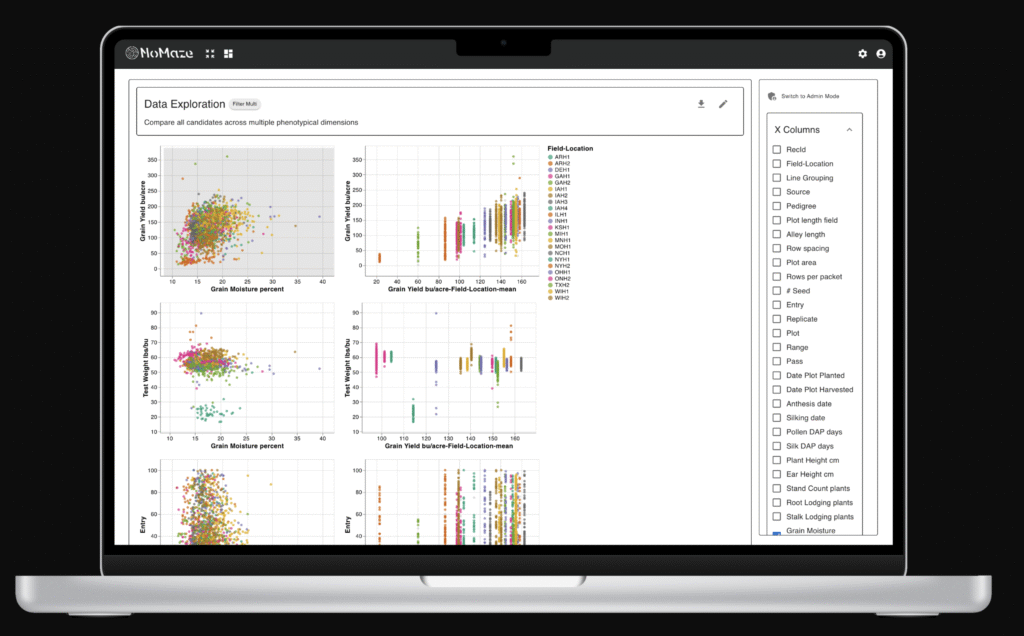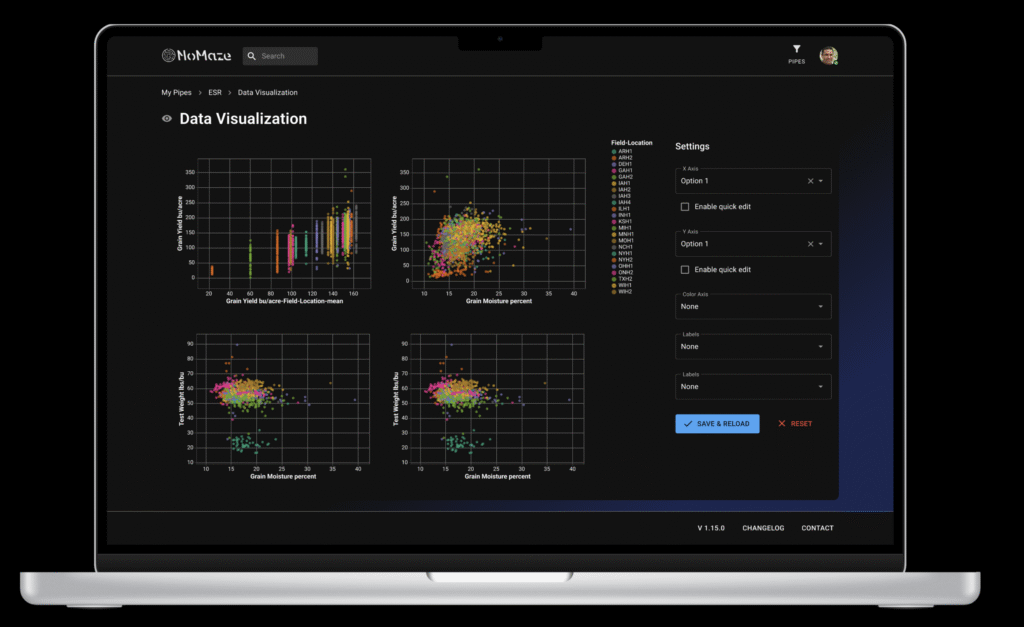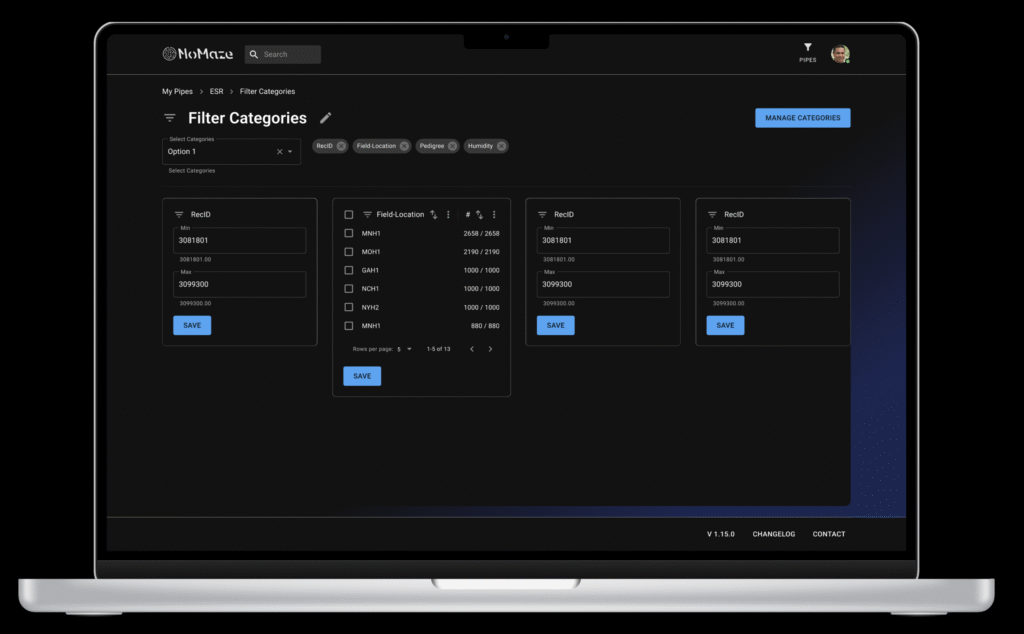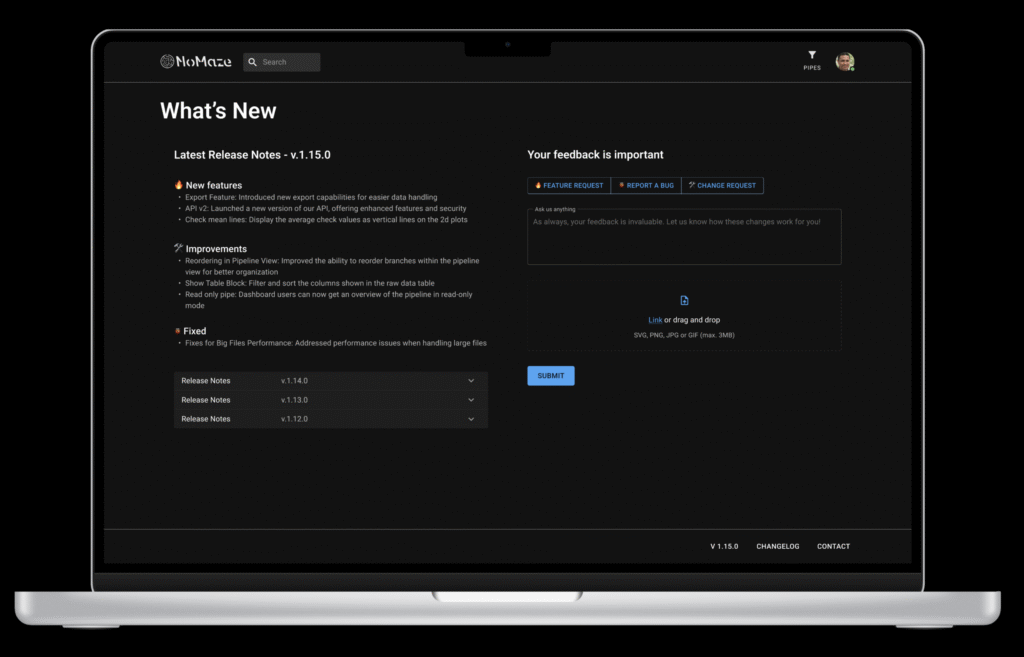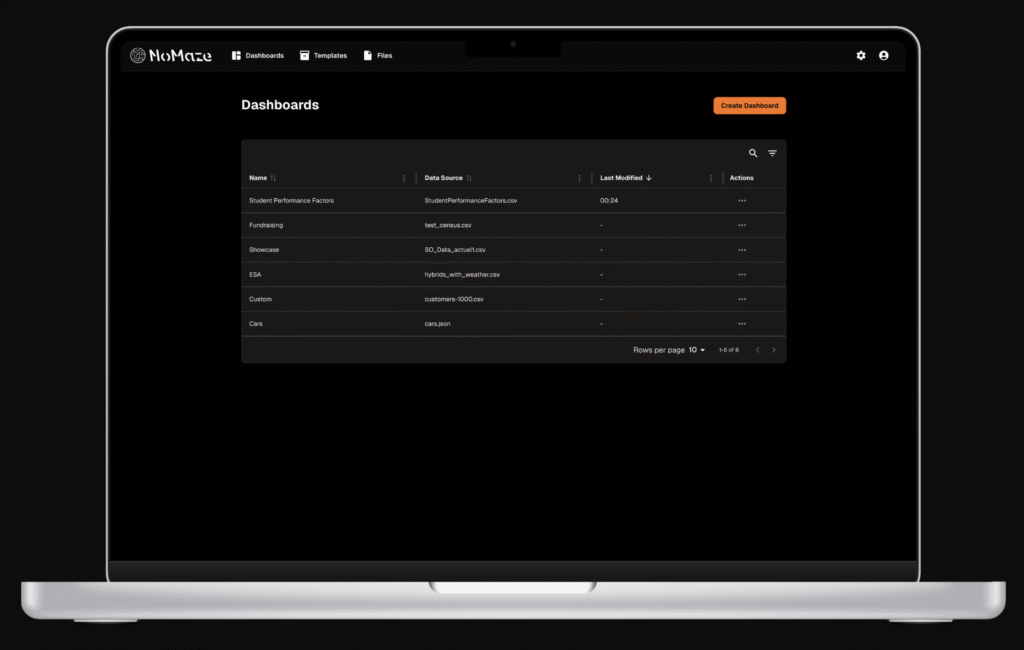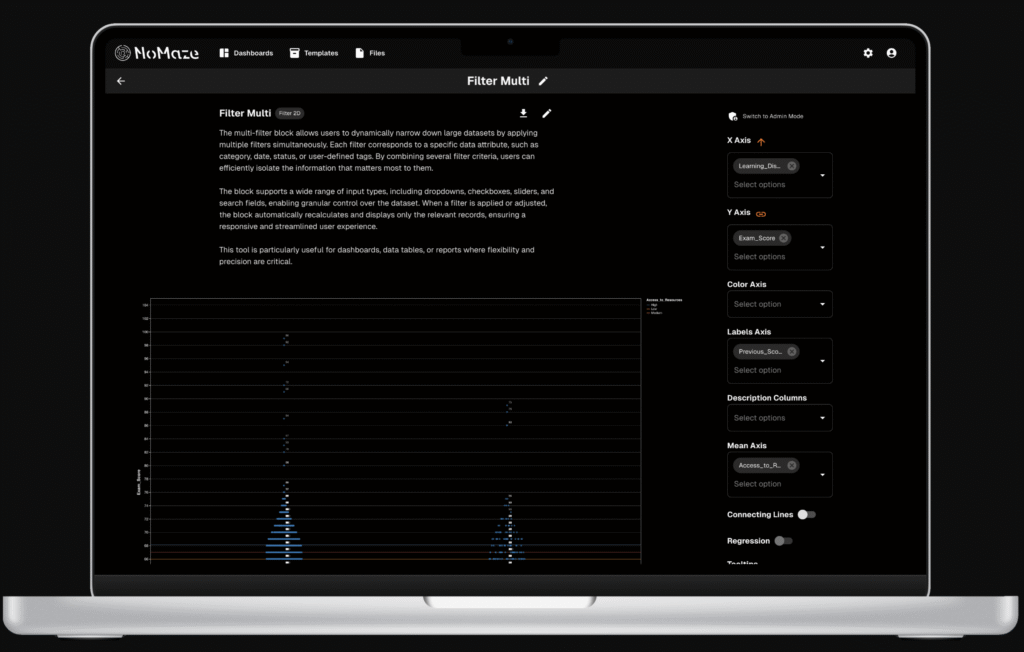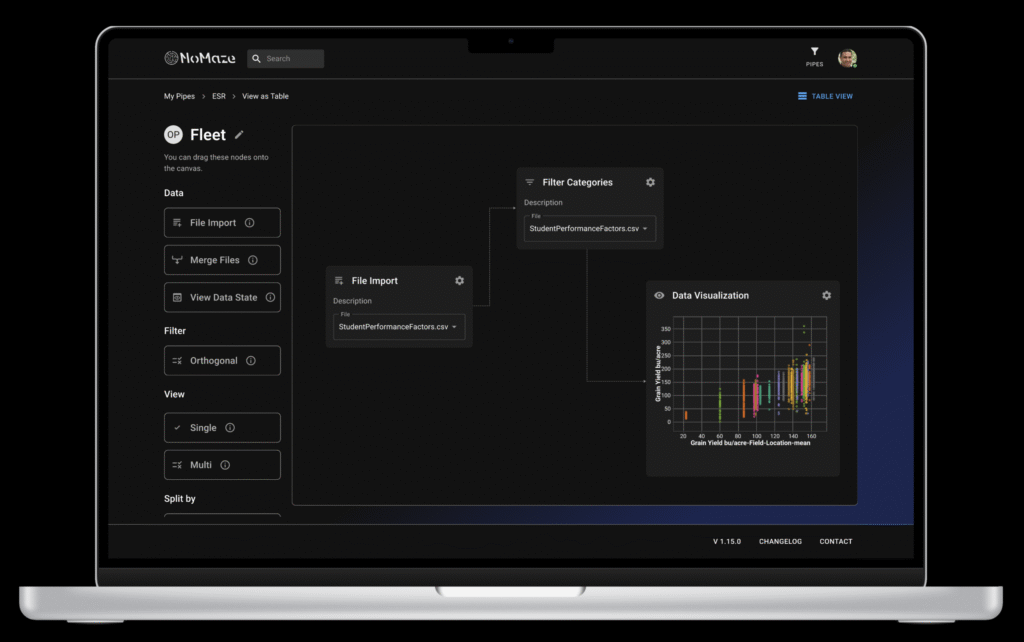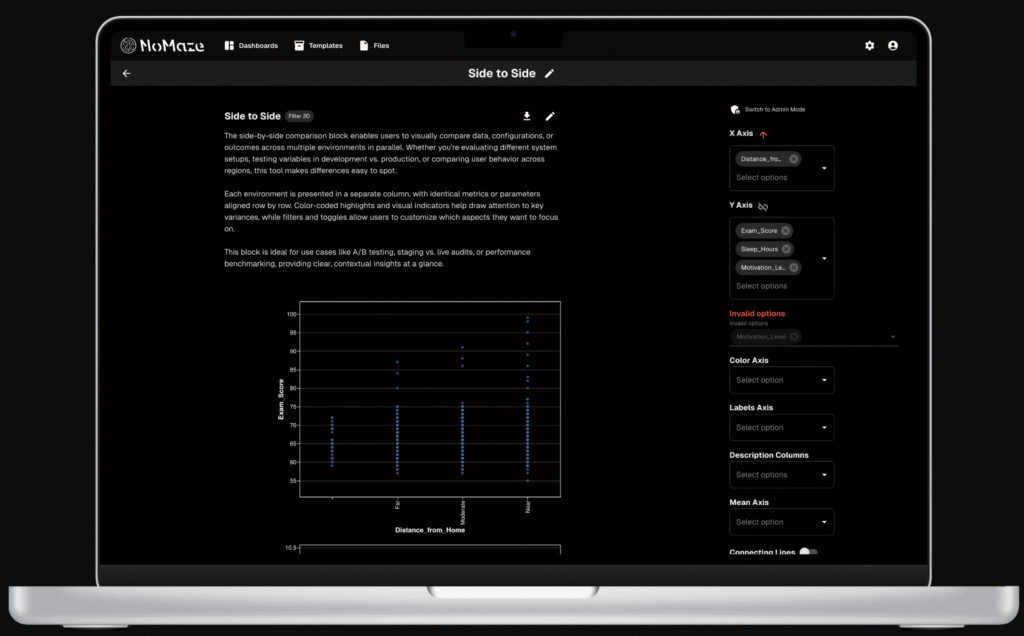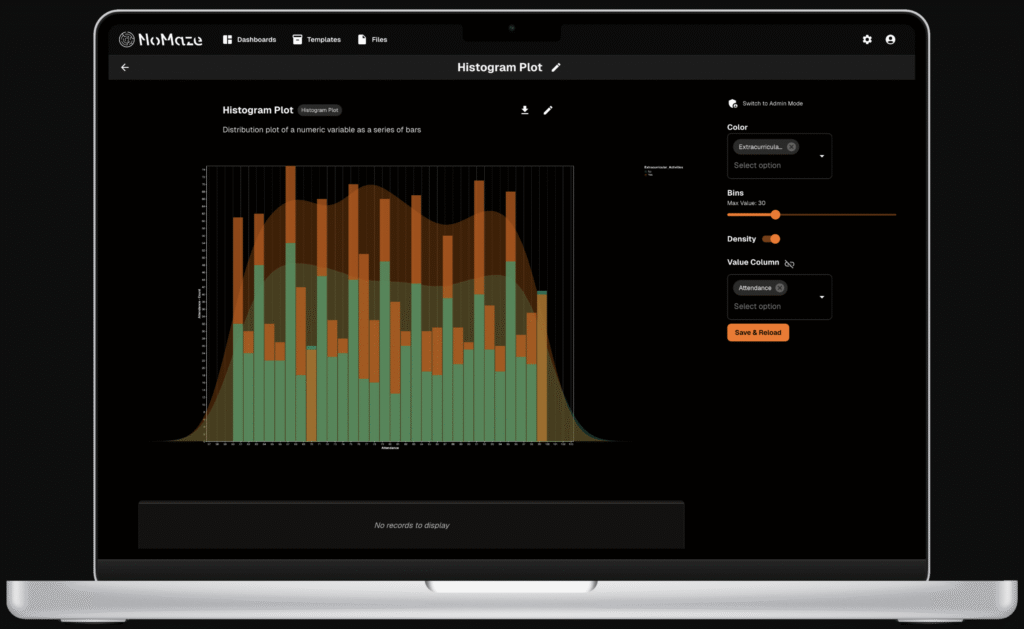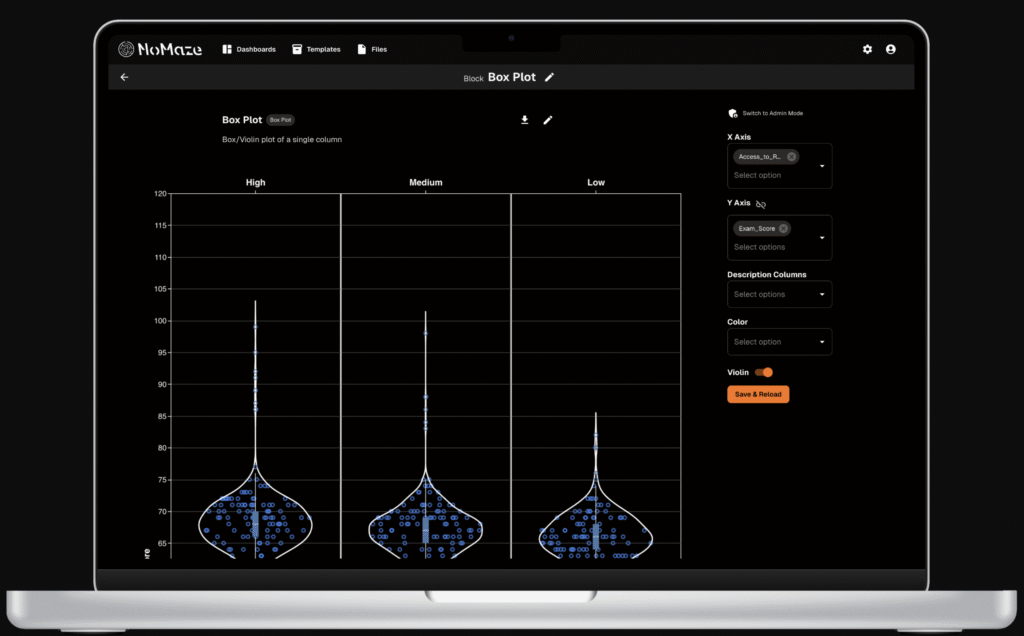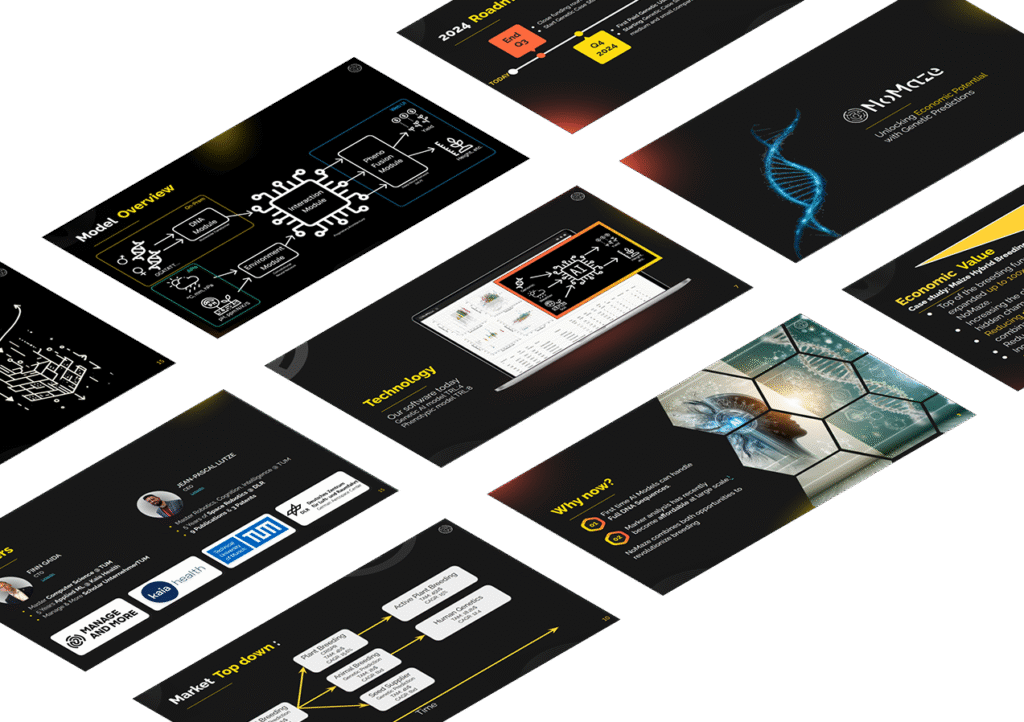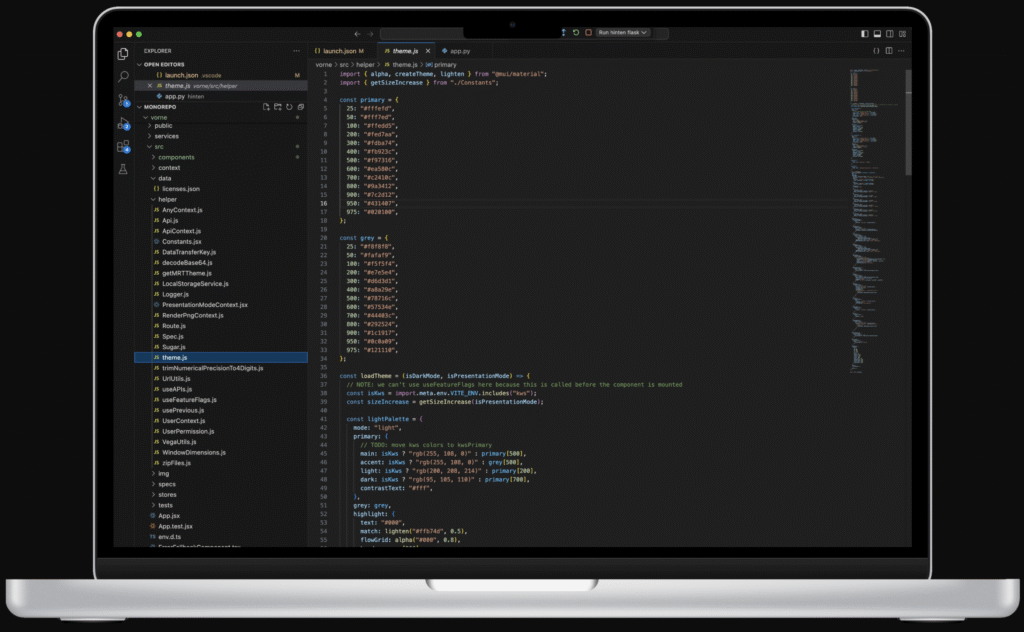Product design, Design system, ux design
Experts in plant breeding
Since July 2024, I have been working at NoMaze GmbH as a Product Designer, Design System Engineer, and UX Designer. Shortly after joining, it became clear that user dissatisfaction with the platform was growing. Feedback repeatedly pointed to the same core issue:
The app looks like an Excel table.
This highlighted an urgent need to not only modernize the interface but also reframe the user experience to better fit the evolving needs of our audience.
WHO: NoMaze Gmbh
WHAT: Product Design, Design System, UX Design
WHEN: July 2024 – In Progress

Summary
NoMaze initially developed an MVP to assist plant breeders in efficiently analyzing data. However, users reported significant challenges with the app’s usability and design. Our approach involved a phased redesign—starting with visual and structural enhancements to the existing functionality, followed by deeper analysis and feature refinement.
01
02
Problem Statement
The MVP helped plant breeders analyze data faster but fell short in usability and aesthetics, leading to:
Outdated, table-heavy UI leading to poor first impressions and usability issues.
Increasing complexity of workflows overwhelmed new users.
Inconsistent design patterns and code structure made scaling difficult.
Material-UI (MUI) framework specifics.
03
The Plan
- Quick Wins: Address “low-hanging fruits” by improving the current UI without altering core functionality.
- User-Centered Design: Conduct research to identify pain points and opportunities.
- Data-Driven Insights: Implement sentiment analysis to evaluate user opinions on features.
- Iterative Design: Develop new user flows, wireframes, and components based on research findings.
- Scalable Tech Stack: Build a responsive, intuitive UI using MUI design system, React Material Table, and Vega for visualization.
04
Gathering the Low-hanging fruits
Introducing Modern Tools and Component Refactoring
This required a massive refactoring effort but established a scalable foundation for future development.
ReactFlow was integrated for workflow visualization, offering users a much clearer and interactive way to design and manage workflows.
Material React Table replaced legacy tables, bringing modern table features like virtualization, better filtering, sorting, and customizable layouts.
Complete layout and component refactoring enabled centralized control through a streamlined design system, improving consistency across the platform.
- Materials aligned with our new visual language for pitch-decks, presentations, stationery, and even digital signage.
UX Issues fixed
Better Onboarding and Administration
New Core Features
A message from the Founders

05
back to the basics
Brand Guidelines
Parallel to the UI/UX overhaul, we:
Defined a new brand language, including typography, color palettes, iconography, and micro-interactions.
Developed stakeholder-facing pitch decks to align internal teams and external customers.
Applied branding across the app and adapted it for white-labeled, on-premise deployments.
06
Brand assets & Decks
This update is part of a broader evolution of our platform. In between engineering smarter tools, we’ve also crafted a wide range of brand assets, presentations, pitch decks, advertising creatives, and support materials—ensuring every touchpoint looks and feels cohesive.
Social Media Ads Templates
Presentation & Documentation Templates
Pitch & Tech Decks
Build fully customizable dashboards with interactive nodes
A message from the Founders



Let’s create something great together.


